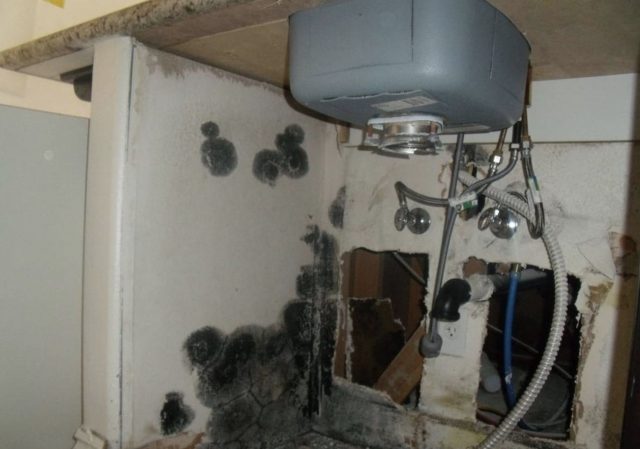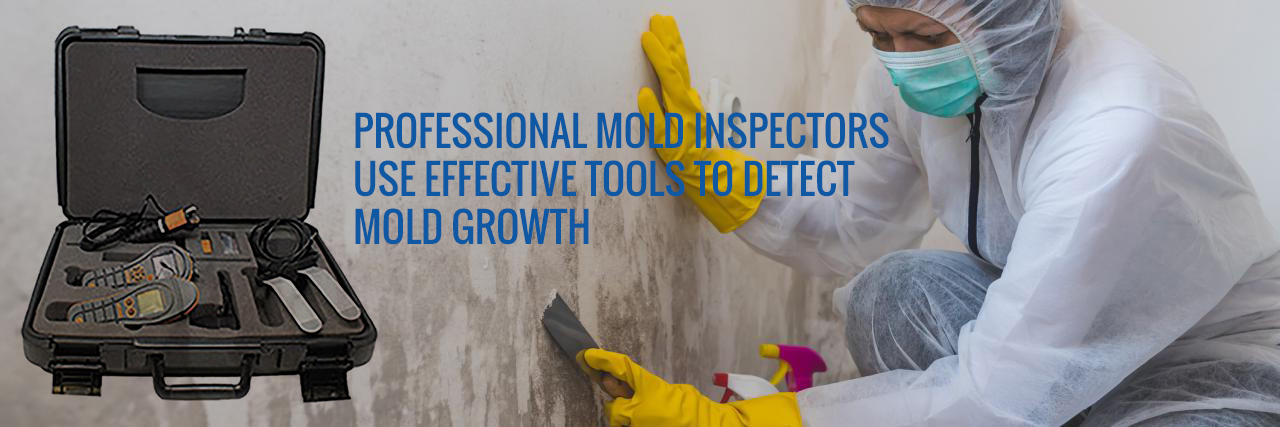How to Identify and Remove Mold in Baseboards Under Kitchen Sink
If you've noticed a musty smell lingering in your kitchen, or have recently spotted dark spots or discoloration on your baseboards, it's likely that you have mold growing under your kitchen sink. While this can be a common issue in many homes, it's important to address it quickly before it spreads and causes more damage. Here's how to identify and remove mold in your baseboards under the kitchen sink.
Signs of Mold Growth in Baseboards Under Kitchen Sink
Mold can be difficult to spot, but there are a few key signs that indicate its presence in your baseboards under the kitchen sink. Look out for dark spots or discoloration on your baseboards, a musty or earthy smell, or even visible growth. You may also notice an increase in allergy symptoms or respiratory issues if mold is present in your home.
Causes of Mold Growth in Baseboards Under Kitchen Sink
Mold thrives in warm, dark, and damp environments, making the baseboards under your kitchen sink the perfect breeding ground. This can be caused by a number of factors, including leaky pipes or faucets, poor ventilation, or even spills or moisture buildup from daily kitchen activities. If left untreated, mold can spread quickly and cause significant damage to your home.
Preventing Mold Growth in Baseboards Under Kitchen Sink
The best way to prevent mold growth in your baseboards under the kitchen sink is to address any potential sources of moisture. Check for leaks and fix them immediately, ensure proper ventilation in the area, and regularly clean and dry the space under your sink. You can also use a dehumidifier to control humidity levels and prevent mold from thriving.
DIY Methods for Removing Mold in Baseboards Under Kitchen Sink
If you catch the mold growth early enough, you may be able to remove it yourself with some DIY methods. Start by wearing protective gear, such as gloves and a mask, to avoid inhaling mold spores. Mix a solution of equal parts water and white vinegar, and use a sponge or cloth to scrub the affected areas. You can also use a commercial mold cleaner, following the instructions carefully.
Professional Mold Removal Services for Baseboards Under Kitchen Sink
In cases where the mold growth is extensive or has spread to other areas, it's best to call in a professional mold removal service. They have the necessary expertise and tools to safely remove the mold and prevent it from coming back. They can also identify the source of the moisture and address any underlying issues to prevent future mold growth.
Health Risks of Mold in Baseboards Under Kitchen Sink
Mold may seem like a minor inconvenience, but it can actually have serious health implications. Exposure to mold can aggravate allergies and respiratory conditions, and in some cases, even lead to more serious health issues. It's important to address mold growth in your home to protect the health and well-being of you and your family.
How to Repair and Replace Mold-Damaged Baseboards Under Kitchen Sink
If the mold growth has caused damage to your baseboards, it's important to repair or replace them to prevent further issues. Use a putty knife to remove any damaged areas, and fill in the gaps with wood filler. Sand the area smooth and paint over it to match the rest of the baseboard. If the damage is extensive, it may be necessary to replace the baseboards completely.
Tips for Keeping Baseboards Under Kitchen Sink Dry and Mold-Free
To prevent future mold growth, it's important to keep the area under your kitchen sink dry and well-ventilated. Fix any leaks or plumbing issues immediately, regularly clean and dry the area, and use a dehumidifier if necessary. You can also seal the baseboards with a waterproof sealant to prevent moisture from seeping in.
When to Call a Professional for Mold Inspection in Baseboards Under Kitchen Sink
If you suspect mold growth in your baseboards under the kitchen sink, it's always best to call a professional for a mold inspection. They can assess the extent of the mold growth and determine the best course of action for removal. It's also important to call a professional if you have underlying health issues, as exposure to mold can exacerbate these conditions.
Mold Found in the Baseboard Under Kitchen Sink: A Common House Design Issue

The Dangers of Mold in the House
 Mold is a type of fungus that thrives in damp and dark environments, making the baseboard under the kitchen sink an ideal breeding ground. While it may seem like a small and harmless issue, mold can actually pose serious health risks and cause damage to your house. Mold spores can easily spread through the air and can trigger respiratory issues and allergies. In some cases, it can even lead to more serious health problems such as asthma or lung infections. Not only that, but mold can also weaken the integrity of your house's structure and cause costly damage if left untreated.
Mold is a type of fungus that thrives in damp and dark environments, making the baseboard under the kitchen sink an ideal breeding ground. While it may seem like a small and harmless issue, mold can actually pose serious health risks and cause damage to your house. Mold spores can easily spread through the air and can trigger respiratory issues and allergies. In some cases, it can even lead to more serious health problems such as asthma or lung infections. Not only that, but mold can also weaken the integrity of your house's structure and cause costly damage if left untreated.
Identifying Mold in the Baseboard Under the Kitchen Sink
 Mold can often go unnoticed, especially if it is hidden away in a dark and hard-to-reach area like the baseboard under the kitchen sink. However, there are some signs that can indicate the presence of mold in this area. These include a musty or earthy smell, visible discoloration or dark spots on the baseboard, and a warped or distorted appearance. If you notice any of these signs, it is important to address the issue immediately to prevent further spread and damage.
One of the main causes of mold growth in the baseboard under the kitchen sink is a leaky pipe or faucet.
This constant source of moisture creates the perfect conditions for mold to thrive. Additionally, poor ventilation and lack of natural light in this area can contribute to mold growth.
Mold can often go unnoticed, especially if it is hidden away in a dark and hard-to-reach area like the baseboard under the kitchen sink. However, there are some signs that can indicate the presence of mold in this area. These include a musty or earthy smell, visible discoloration or dark spots on the baseboard, and a warped or distorted appearance. If you notice any of these signs, it is important to address the issue immediately to prevent further spread and damage.
One of the main causes of mold growth in the baseboard under the kitchen sink is a leaky pipe or faucet.
This constant source of moisture creates the perfect conditions for mold to thrive. Additionally, poor ventilation and lack of natural light in this area can contribute to mold growth.
Preventing and Removing Mold in the Baseboard Under the Kitchen Sink
 The best way to prevent mold from growing in the baseboard under the kitchen sink is to address any sources of moisture and ensure proper ventilation in the area. Regularly check for any leaks and fix them immediately. Consider installing a dehumidifier or using a fan to help reduce moisture levels.
It is also important to regularly clean and dry the baseboard to prevent mold from growing.
If you do find mold in the baseboard under the kitchen sink, it is crucial to take proper steps to remove it. While small patches of mold can be cleaned with a mixture of water and vinegar or a commercial mold cleaner, larger infestations may require professional help. Be sure to wear protective gear such as gloves and a mask when cleaning mold to avoid any health risks.
In conclusion, mold in the baseboard under the kitchen sink is a common house design issue that should not be taken lightly.
Regular maintenance and proper prevention methods can help keep your house free from mold and protect your health and the integrity of your home.
If you do find mold, it is important to take immediate action to prevent any further damage. With proper care and attention, you can ensure a safe and healthy living environment for you and your family.
The best way to prevent mold from growing in the baseboard under the kitchen sink is to address any sources of moisture and ensure proper ventilation in the area. Regularly check for any leaks and fix them immediately. Consider installing a dehumidifier or using a fan to help reduce moisture levels.
It is also important to regularly clean and dry the baseboard to prevent mold from growing.
If you do find mold in the baseboard under the kitchen sink, it is crucial to take proper steps to remove it. While small patches of mold can be cleaned with a mixture of water and vinegar or a commercial mold cleaner, larger infestations may require professional help. Be sure to wear protective gear such as gloves and a mask when cleaning mold to avoid any health risks.
In conclusion, mold in the baseboard under the kitchen sink is a common house design issue that should not be taken lightly.
Regular maintenance and proper prevention methods can help keep your house free from mold and protect your health and the integrity of your home.
If you do find mold, it is important to take immediate action to prevent any further damage. With proper care and attention, you can ensure a safe and healthy living environment for you and your family.

















































































